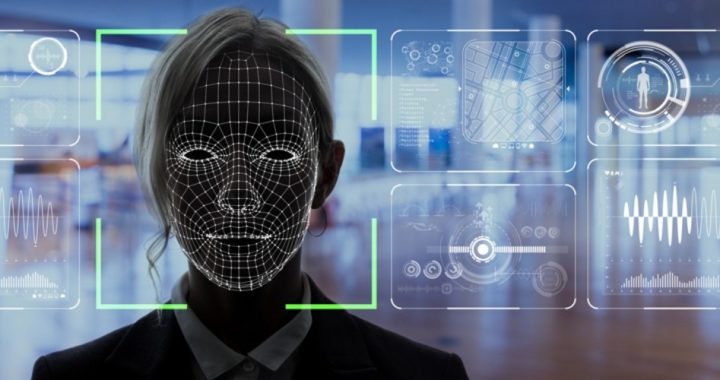
Following up on an executive order he issued in March 2017, President Donald Trump is pushing hard for the installation of advanced facial recognition technology in the top 20 airports in the United States, empowering the federal government to create a database of “100 percent of all international passengers,” including American citizens.
This startling development was revealed in documents obtained by the Electronic Privacy Information Center (EPIC) as part of their effort to stop the unwarranted searches of the biometric data of American citizens.
The explosive content of this cache of documents was reported exclusively by BuzzFeed News:
According to 346 pages of documents obtained by the nonprofit research organization Electronic Privacy Information Center — shared exclusively with BuzzFeed News and made public on Monday as part of Sunshine Week — US Customs and Border Protection is scrambling to implement this “biometric entry-exit system,” with the goal of using facial recognition technology on travelers aboard 16,300 flights per week — or more than 100 million passengers traveling on international flights out of the United States — in as little as two years, to meet Trump’s accelerated timeline for a biometric system that had initially been signed into law by the Obama administration. This, despite questionable biometric confirmation rates and few, if any, legal guardrails.
These same documents state — explicitly — that there were no limits on how partnering airlines can use this facial recognition data. CBP did not answer specific questions about whether there are any guidelines for how other technology companies involved in processing the data can potentially also use it. It was only during a data privacy meeting last December that CBP made a sharp turn and limited participating companies from using this data. But it is unclear to what extent it has enforced this new rule. CBP did not explain what its current policies around data sharing of biometric information with participating companies and third-party firms are, but it did say that the agency “retains photos … for up to 14 days” of non-US citizens departing the country, for “evaluation of the technology” and “assurance of the accuracy of the algorithms” — which implies such photos might be used for further training of its facial matching AI.
In consequence of its investigation and its praiseworthy purpose of enforcing the protections afforded by the Constitution, EPIC has filed a Freedom of Information Act (FOIA) petition against Customs and Border Protection.
BuzzFeed’s report on the details the Department of Homeland Security (DHS) undoubtedly wanted to remain hidden reveal that CBP purposefully skirted around a “rulemaking” procedure, “which requires the agency to solicit public feedback before adopting technology intended to be broadly used on civilians, something privacy advocates back up.” This bypass by CBP is worrisome, as BuzzFeed explains, because of the publicized failures of the systems designed by some of the world’s largest tech companies.
I reported on these failures in November in a story covering Amazon’s donation of facial recognition tech to the city of Orlando, and how that software was being used to track people in real-time, and was resulting in false matches that were “disproportionately people of color.”
It is little wonder that President Trump’s executive order received little attention when it was issued nearly two years ago. Presidents from both major political parties have been tyrannically taking to themselves the power to legislate. Republicans and Democrats alike have embraced the “stroke of the pen, law of the land” philosophy. President Trump is no exception.
And, as with his predecessors, President Trump’s executive orders eviscerate the Constitution and the protections it provides for individual liberty.
Of course, every executive order issued by every president sitting in the Oval Office begins with the phrase, “By the authority vested in me as President by the Constitution.”
In the case of President Trump’s executive order, we are witnessing another in a long line of presidential fiats that violate the Fourth Amendment. As reported by BuzzFeed News:
“I think it’s important to note what the use of facial recognition [in airports] means for American citizens,” Jeramie Scott, director of EPIC’s Domestic Surveillance Project, told BuzzFeed News in an interview. “It means the government, without consulting the public, a requirement by Congress, or consent from any individual, is using facial recognition to create a digital ID of millions of Americans.”
“CBP took images from the State Department that were submitted to obtain a passport and decided to use them to track travelers in and out of the country,” Scott said.
There has been at least one attempt by members of Congress to stall the scanning of all international air travelers.
In May 2018, Senators Edward Markey (D-Mass.) and Mike Lee (R-Utah) sent a letter to the Department of Homeland Security to “query DHS about the process for opting-out of the program, efforts to mitigate the risk of undue burdens on travelers, and the extent of the visa overstay travel fraud the program aims to combat.”
“We believe this formal rulemaking will provide DHS with an opportunity to address the concerns previously raised by us as well as other stakeholders, including airlines, airports, and privacy advocates,” write Senators Markey and Lee to DHS Secretary Kirstjen Nielson.
Regardless of legislative pushback, DHS is accelerating the deployment of the facial recognition technology, likely spurred by the negative attention it is receiving in the couple of days since the BuzzFeed News story broke.
End runs around rules, regulations, and the Constitution are the hallmarks of the federal government and the “swarms of officers” it has created to watch, record, and regulate the lives of every American, regardless of the rule of law.
Image: metamorworks via iStock / Getty Images Plus



